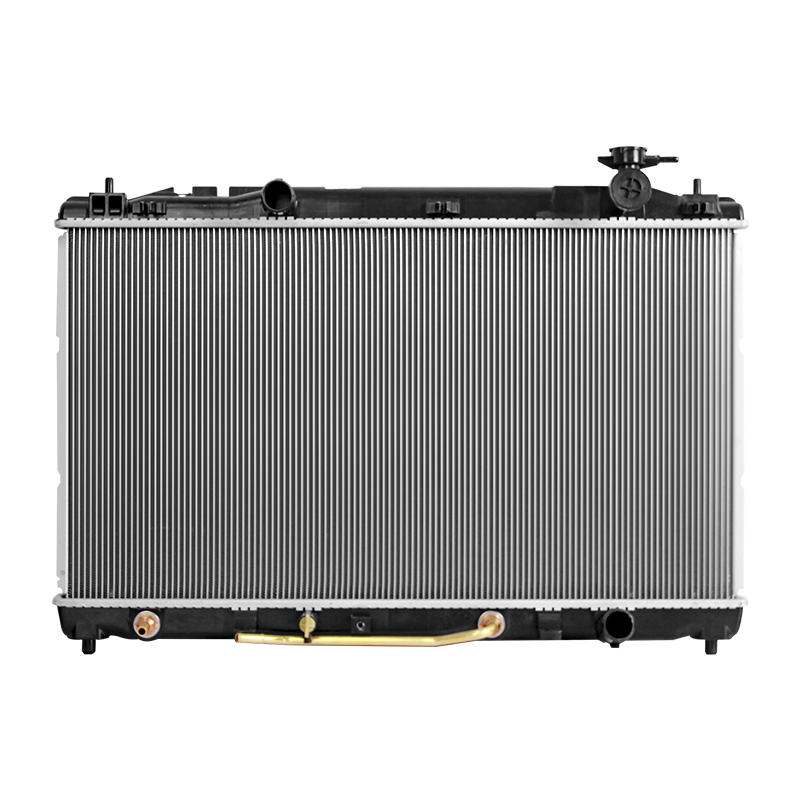2025-01-10
The heat dissipation performance of HVAC Auto Radiator is affected by many factors, including the material, design, working environment, and usage of the radiator. The following are some of the main factors that affect the heat dissipation performance of the radiator:
Common materials for HVAC Auto Radiator include aluminum, copper, copper-aluminum alloy, etc. Different materials have different thermal conductivity. Aluminum alloy radiators are widely used due to their excellent thermal conductivity, lightness, and corrosion resistance. Copper radiators have high heat transfer efficiency, but are heavier and more expensive. The choice of material directly affects the thermal efficiency and durability of the radiator.
The surface treatment of the radiator (such as coating, plating) also affects the heat transfer. The surface smoothness and the quality of the coating determine the contact efficiency between the radiator and the surrounding air. A good coating can effectively reduce corrosion and wear and extend the service life of the radiator.
The fin design of the radiator directly affects the heat dissipation area of the radiator. More fins mean more air contact area, which helps to improve the heat dissipation efficiency. However, too high a density of fins may cause poor air flow, which in turn affects the heat dissipation effect. A reasonable number and spacing of fins can optimize the heat dissipation performance.
The design of the coolant flow channel inside the radiator is crucial to the heat dissipation efficiency. The design of the flow channel should ensure that the coolant flows evenly throughout the radiator to avoid local overheating or overcooling of the coolant. An unreasonable flow channel design may cause the coolant to flow too slowly or too quickly, reducing the working efficiency of the radiator.
The volume (length, width and thickness) of the radiator determines the amount of heat it can handle. A larger radiator can hold more coolant and provide more heat dissipation surface area, which effectively improves the heat dissipation performance. Therefore, choosing a radiator of the right size is the key to improving the heat dissipation efficiency.

The fluidity of the coolant (i.e. its viscosity) directly affects the flow rate of the coolant in the radiator, which in turn affects the heat dissipation efficiency. Coolants with lower viscosity have better fluidity and help improve heat dissipation performance. Coolants with high viscosity flow more slowly and may cause a decrease in heat dissipation efficiency.
Coolant temperature that is too high or too low will affect the heat dissipation effect. When the coolant temperature is too high, the efficiency of heat transfer is reduced and the radiator cannot effectively dissipate heat; when the temperature is too low, it may cause the coolant to flow poorly, affecting the cooling effect. Impurities, dirt, rust, etc. in the coolant may also affect its heat transfer efficiency, so it is necessary to replace and clean the coolant regularly.
The composition and concentration of the coolant should meet the manufacturer's requirements. Too high antifreeze concentration may cause the coolant to flow poorly, thus affecting the heat dissipation performance; while too low concentration may cause the freezing point to be too high, and even affect the normal operation of the engine.
The radiator releases heat by exchanging with the outside air, so the efficiency of air flow is crucial to the heat dissipation performance. Poor air flow (such as radiator blockage, dust or debris blocking the radiator surface) will cause heat accumulation, thereby reducing the heat dissipation effect. If the environment in which the radiator is installed has poor air circulation (such as design problems in the engine compartment), it may also affect the heat dissipation performance.
The working environment temperature of the radiator directly affects its heat dissipation efficiency. In a high temperature environment, the temperature of the air itself is high, and the heat exchange efficiency of the radiator decreases, which may cause the engine to overheat. In a cold environment, the temperature of the coolant is low, which may cause the engine to fail to reach the normal operating temperature, affecting the overall performance of the cooling system.
The installation angle and position of the radiator have a certain impact on its heat dissipation efficiency. If the radiator does not match the air flow direction, or is installed in a position that is not conducive to air circulation, the heat dissipation effect will be poor. Reasonable radiator installation angle and position can optimize air flow and improve heat dissipation performance.
Only through reasonable design, appropriate material selection, scientific maintenance and regular inspection can the optimal performance of the radiator be guaranteed, thereby effectively maintaining the normal operating temperature of the engine and extending the service life of the engine and cooling system.